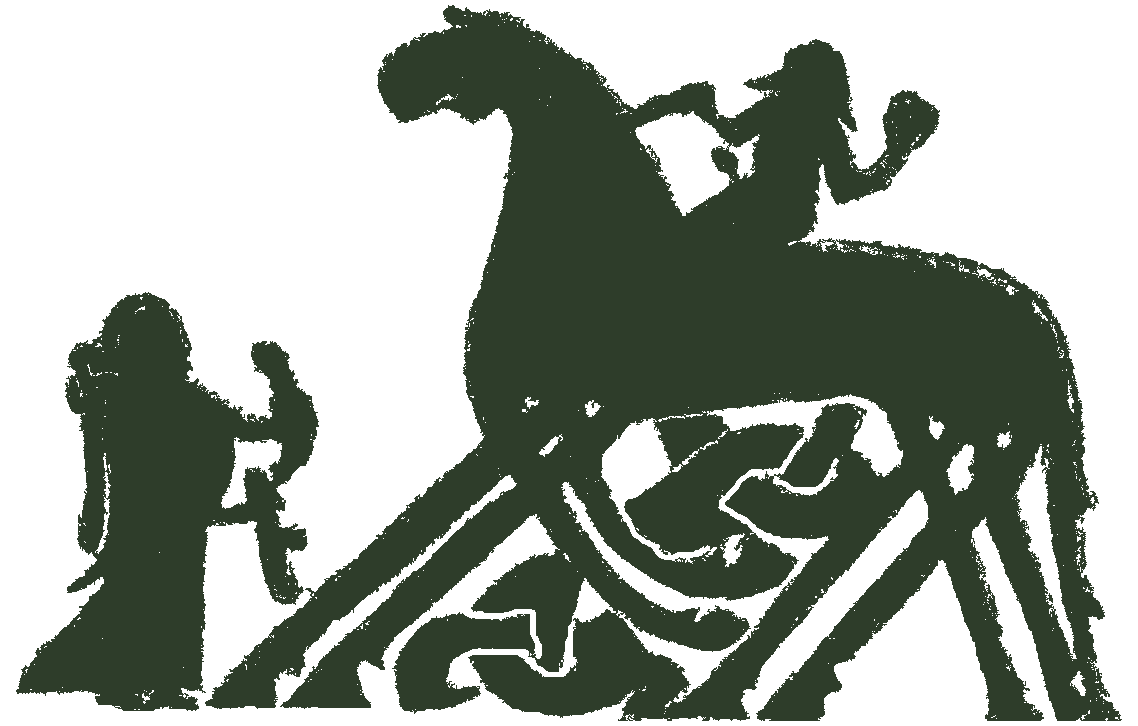Sigvatr Þórðarson
description
Sigvatr or Sighvatr Þórðarson (Sigv) is said (ÍF 27, 54) to have been the son of Þórðr Sigvaldaskáld ‘Poet of Sigvaldi’, an Icelander who served, in succession, Sigvaldi jarl Strút-Haraldsson, leader of the Jómsvíkingar, his brother Þorkell inn hávi ‘the Tall’, who campaigned in England, and Óláfr Haraldsson, later king of Norway (r. c. 1015-30) and saint. Þórðr is listed as one of Sigvaldi’s skalds in Skáldatal (SnE 1848-87, III, 259, 268), but none of his poetry survives. The family tradition of poetry can also be traced in Óttarr svarti ‘the Black’, said to have been Sigvatr’s sister’s son (ÍF 27, 144; ÓH 1941, I, 203). Sigvatr was brought up by a certain Þorkell, at Apavatn in south-west Iceland. When nearly fully grown he sailed to what is now Trondheim, where he met up with his father and joined King Óláfr’s retinue. According to Snorri (ÍF 27, 54-6; ÓH 1941, I, 81-3), Sigvatr recited Lv 2-3 at this time, and he interceded with the king on behalf of Icelandic merchants forced to pay a heavy tax in Norway (cf. Sigv Lv 4). It is also likely that this is when Þórðr provided Sigvatr with the material for Víkv (see Introduction to Sigv Víkv), which may be the poem referred to in the prose introduction to Sigv Lv 2 (Fidjestøl 1982, 118). There is no evidence that Sigvatr ever returned to Iceland, and according to the anecdote in which Sigv Lv 11 is preserved, he died on the island of Selja in north-western Norway and was buried at Kristskirkja (Kristkirken) in Trondheim. His poetry records his various journeys to Sweden, England and the Continent, as well as incidents in Norway. We know nothing of Sigvatr’s private life, except that he had a daughter called Tófa, who had King Óláfr himself as her godfather (Sigv Lv 19).
Sigvatr’s surviving poetic oeuvre is both large and remarkably diverse, encompassing different kinds of encomia not only on King Óláfr (Sigv Víkv, Sigv Nesv, Sigv Óldr, Sigv ErfÓl), but also on King Knútr of Denmark (Sigv Knútdr) and the Norwegian nobleman Erlingr Skjálgsson (Sigv Erl, Sigv Erlfl). Sigvatr was godfather to King Magnús inn góði ‘the Good’ Óláfsson and composed some avuncular words of advice to the boy-king (Sigv BervII). All of these patrons are recognised in Skáldatal (SnE 1848-87, III, 252-4, 258, 260-2, 269), where Sigvatr is also credited with having composed for the Swedish king Ǫnundr Óláfsson (although no such poetry survives, cf. Sigv Knútdr 4/6) and the Norwegian chieftain Ívarr inn hvíti ‘the White’ (cf. Context to Sigv Lv 8). Sigvatr also composed a poem on the Norwegian pretender Tryggvi Óláfsson (Sigv Tryggfl) and is unique in having composed in dróttkvætt in praise of a woman, Óláfr Haraldsson’s widow Ástríðr Óláfsdóttir (Sigv Ást). Several of Sigvatr’s poems are more or less loosely connected sequences of stanzas rather than more formal compositions, and encompass both travelogue (Sigv Austv) and political commentary (Sigv Vestv, Sigv BervII). The latter genre is also well represented in his lausavísur, which also include some remarkably personal stanzas expressing his grief at the death of King Óláfr (Sigv Lv 22-4). Sigvatr’s status as a hǫfuðskáld ‘chief skald’ was recognised in the twelfth century (cf. Esk Geisl 12/8VII). His versatility as a poet has clearly inspired a number of anecdotes focusing on the composition of poetry, mostly of doubtful authenticity (cf. Contexts to Sigv Lv 1, 8, 11, 27; also Introduction to Ótt Hfl). Apart from two fragments preserved in SnE (Sigv Frag 1-2III), Sigvatr’s poetry is transmitted in a wide range of texts within the tradition of the kings’ sagas and is therefore edited in this volume or (in the case of the late Sigv Berv) in SkP II. For general studies of Sigvatr’s life and works, see Paasche (1917), Hollander (1940) and Petersen (1946).
